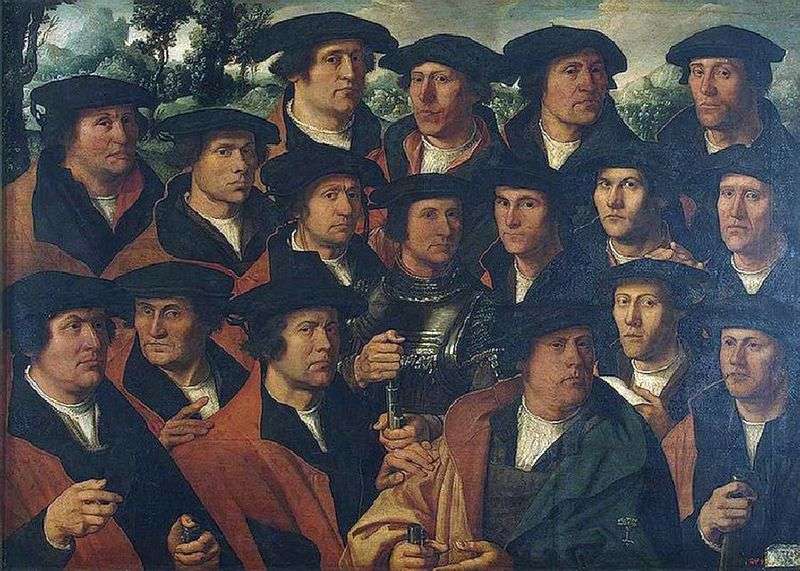
“Group portrait”, or rather “Group portrait of officers of the shooting company of St. George,” refers to the early period of his work. In those days, Dutch citizens, in order to maintain their independence, serially served in the people’s militia under the command of the most influential people. After the service, solemn meals were held in honor of the officers of such units. In Haarlem, it was customary to capture this outstanding event on canvas. The artist faced a big task: he had to combine several portraits on one canvas, while preserving the ease of poses and compositional freedom.
The first work in this genre was clearly not successful for the painters. Huls found the right approach to solving this problem. In the group portrait, which was very official, the artist managed to convey the cheerful atmosphere of the festive feast. In his picture, all twelve participants in the banquet are depicted as if they were the artist’s longtime acquaintances. At the place of honor, at the head of the table, with a glass in his hand sat the corpulent company commander, surrounded by his subordinates. Among the officers there is a small ensign on the opposite side of the picture – he obviously did not have enough room at the table, but he does not regret about it and stands proudly akimbo, as if inviting the viewer to admire his beautiful outfit.
Gloriously performed Huls and individual portraits, although it is worth mentioning that such paintings were written for a very meager reward and at one time were not particularly pride of the artist. On one of the portraits, Khals captured the cheerful face of Peter van den Brucke. The portrait is made with such ease that it seems that Van den Brooke’s face is snatched from the atmosphere of a pleasant drinking conversation. This famous merchant-adventurer from the canvas looks at the viewer with friendly familiarity.
Portraits of Huls were very unusual for their era. In those days, the canvases were written leisurely, diligently, the models should have been posing artists for long days. Huls did not recognize the many hours of posing sessions, he did not tire his model, did not make it stay for hours at a standstill. Therefore, the artist was able to capture a person in action, in the flow of life. Huls wrote swiftly, he only needed to catch the moment when the person’s face acquired some special expression, and remember this moment.
 Banquet of officers of the company of St. George by France Huls
Banquet of officers of the company of St. George by France Huls Arrows of the guild of St. Adriana by France Huls
Arrows of the guild of St. Adriana by France Huls Banquet of officers of the company of St. Adriana by France Huls
Banquet of officers of the company of St. Adriana by France Huls Portrait of Jasper Schade van Vestrum by France Huls
Portrait of Jasper Schade van Vestrum by France Huls Singing Boys by France Huls
Singing Boys by France Huls Lady with a Fan by France Huls
Lady with a Fan by France Huls A group portrait of the corporation of the Amsterdam shooters by Jacobs Dirk &;; nbsp
A group portrait of the corporation of the Amsterdam shooters by Jacobs Dirk &;; nbsp Gypsy girl by France Huls
Gypsy girl by France Huls